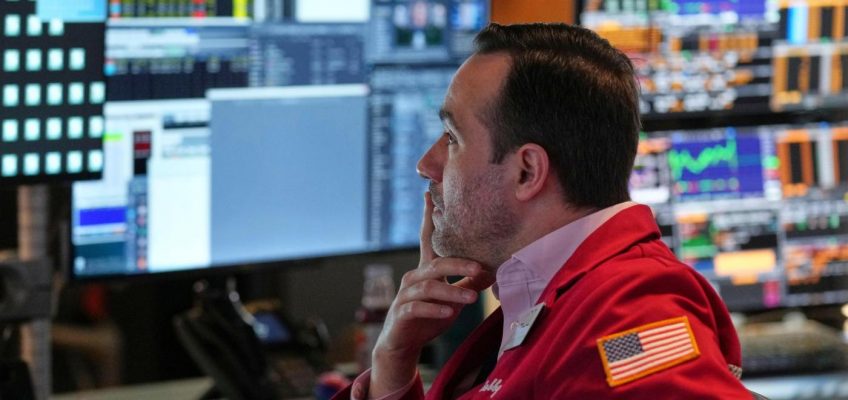By ADRIAN SAINZ, GEORGE WALKER IV and JOHN SEEWER, Associated Press
LAKE CITY, Ark. (AP) — Parts of the Midwest and South faced the possibility of torrential rains and life-threatening flash floods Friday, while many communities were still reeling from tornadoes that destroyed whole neighborhoods and killed at least seven people.
Forecasters warned of catastrophic weather on the way, with round after round of heavy rains expected in the central U.S. through Saturday. Satellite imagery showed thunderstorms lined up like freight trains to take the same tracks over communities in Arkansas, Tennessee and Kentucky, according to the national Weather Prediction Center in Maryland.
The National Weather Service’s Oklahoma-based Storm Prediction Center warned of a moderate risk of severe thunderstorms Friday along a corridor from northeast Texas through Arkansas and into southeast Missouri. That area, which has a population of about 2.3 million, could see clusters of severe thunderstorms in the late afternoon and evening, with the potential for some storms to produce strong to intense tornadoes and very large hail.
Those killed in the initial wave of storms that spawned powerful tornadoes on Wednesday and early Thursday were in Tennessee, Missouri and Indiana. They included a Tennessee man and his teen daughter whose home was destroyed, and a man whose pickup struck downed power lines in Indiana. In Missouri, Garry Moore, who was chief of the Whitewater Fire Protection District, died while likely trying to help a stranded motorist, according to Highway Patrol spokesperson Sgt. Clark Parrott.
Tennessee Gov. Bill Lee said entire neighborhoods in the hard-hit town of Selmer were “completely wiped out” and said it was too early to know whether there were more deaths as searches continued. He warned people across the state to stay vigilant with more severe weather predicted.
Gov. Bill Lee speaks about the storm damage during a news conference Thursday, April 3, 2025, in Selmer, Tenn. (AP Photo/George Walker IV)
“Don’t let your guard down,” he said during a Thursday evening news conference. “Don’t stop watching the weather. Don’t stop preparing yourself. Have a plan.”
With flattened homes behind him, Dakota Woods described seeing the twister come through Selmer.
“I was walking down the street,” Woods said Thursday. “Next thing you know, I look up, the sky is getting black and blacker, and it’s lighting up green lights, and it’s making a formation of a twister or tornado.”
Flash flood threat looms over many states
By late Thursday, extremely heavy rain was falling in parts of southeastern Missouri and western Kentucky and causing “very dangerous/life threatening flash flooding” in some spots, according to the National Weather Service.
Heavy rains were expected to continue there and in other parts of the region in the coming days and could produce dangerous flash floods capable of sweeping away cars. The potent storm system will bring “significant, life-threatening flash flooding” each day, the National Weather Service said.
Water rescue teams and sandbagging operations were being staged across the region, and the Federal Emergency Management Agency was ready to distribute food, water, cots and generators.
Water rescues were already underway in flooded parts of Nashville, Tennessee, where the rain could persist for days after an unnerving period of tornado warnings that drained the batteries of some city sirens, the fire department said.
Western Kentucky prepared for record rain and flooding in places that normally do not get inundated, Gov. Andy Beshear said. At least 25 state highways were swamped, mostly in the west, according to a statement from his office Thursday.
Flash flooding is particularly worrisome in rural areas of the state where water can quickly rush off the mountains into the hollows. Less than four years ago, dozens died in flooding across eastern Kentucky.
Extreme flooding across the corridor that includes Louisville, Kentucky, and Memphis, which have major cargo hubs, could also lead to shipping and supply chain delays, said Jonathan Porter, chief meteorologist at AccuWeather.
Forecasters attributed the violent weather to warm temperatures, an unstable atmosphere, strong wind shear and abundant moisture streaming from the Gulf.
Tornadoes leave path of damage, and more could be coming
Under darkened skies Thursday morning, the remains of a used car dealership in Selmer stood roofless and gutted, with debris scattered across the car lot and wrapped around mangled trees. Some homes were ripped to their foundations in the Tennessee town, where three tornadoes were suspected of touching down.
The Tennessee Highway Patrol released video of lightning illuminating the sky as first responders scoured the ruins of a home, looking for anyone trapped.
In neighboring Arkansas, a tornado near Blytheville lofted debris at least 25,000 feet high, according to weather service meteorologist Chelly Amin. The state’s emergency management office reported damage in 22 counties from tornadoes, wind, hail and flash flooding.
The home where Danny Qualls spent his childhood but no longer lives was flattened by a tornado in northeast Arkansas.
“My husband has been extremely tearful and emotional, but he also knows that we have to do the work,” Rhonda Qualls said. “He was in shock last night, cried himself to sleep.”
Workers on bulldozers cleared rubble along the highway that crosses through Lake City, where a tornado with winds of 150 mph sheared roofs off homes, collapsed brick walls and tossed cars into trees.
Mississippi’s governor said at least 60 homes were damaged. And in far western Kentucky, four people were injured while taking shelter in a vehicle under a church carport, according to the emergency management office in Ballard County.
Walker IV reported from Selmer, Tennessee, and Seewer from Toledo, Ohio. Associated Press writers Andrew DeMillo in Little Rock, Arkansas; Jonathan Mattise in Nashville, Tennessee, Seth Borenstein in Washington; Isabella O’Malley in Philadelphia; Kathy McCormack in Concord, New Hampshire; Bruce Schreiner in Louisville, Kentucky; Jeff Martin in Atlanta; Hallie Golden in Seattle; and Ed White in Detroit contributed.




